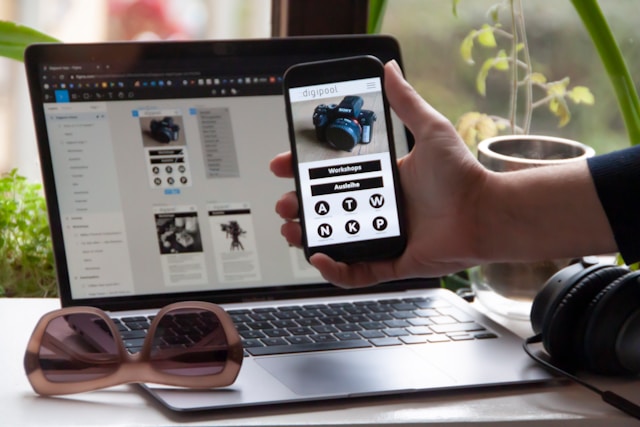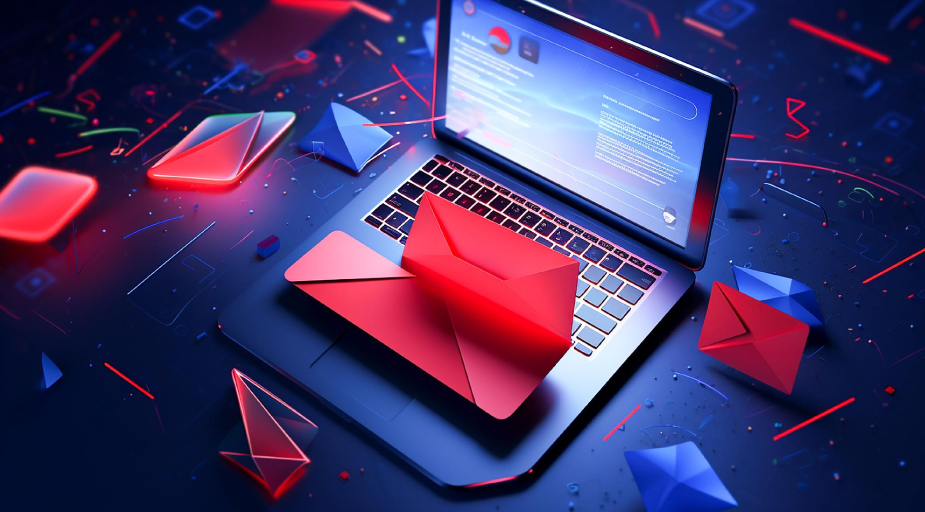Avoid a Frankenstein B2B Customer Experience: Guide to Helping Traditional B2B Companies Make the Transition Online
In recent decades, the arrival of big-box stores in virtually every town was the nail in the coffin for many small, independently owned businesses. The next big shift came from online shopping, and businesses that didn’t cultivate an online presence went under.
Quick Links
Following the COVID-19 pandemic, the new demand for business is ecommerce, even for B2B companies. B2B buyers are becoming more technologically savvy, and B2B companies that don’t adopt new processes are in danger of falling behind.
In ecommerce, interactions between businesses are more complex and significant than interactions between businesses and consumers. B2B companies have their work cut out for them, however, because making the switch isn’t a simple redesign. Moving toward a D2C model takes new technologies and a strategy focused on the customer.
B2B Ecommerce Trends for 2022
According to ecommerce trends, B2B companies have a lot to master to get ahead. Here are some of the top trends:
- Acceleration of online marketplaces
- Demand for D2C-like experiences in B2B
- Expectations of B2B customer personalization
- Integration of systems for multi-channel selling
B2B and D2C businesses are not completely unrelated. Both models rely on similar principles and sales processes to offer products to business entities or consumers, and the goal is to generate leads and sales. In ecommerce, the leads are generated by driving traffic to a B2B ecommerce platform using SEO best practices and online presence.
Why Go Digital?
According to research from McKinsey, for B2B sales, digital is the wave of the future.
B2B Buyers and Sellers Prefer Digital
Over 75 percent of buyers and sellers say they prefer digital self-service and remote engagement over in-person interactions. This made sense during the shutdown, but continued long after quarantine ended.
Safety may be a factor, but it’s not the only one. Self-service and remote interactions streamline the research and purchase processes, and most consumers want speed and convenience. This is true of traditional markets with field sales, such as medical and pharmaceutical products.
Consumers are Comfortable with Online Sales
B2B buyers are comfortable making digital sales, even with large purchases and reorders. Since the opinion has always been that ecommerce was intended for smaller purchases and rapid fulfillment and delivery, this has been a shock.
As a result, B2B companies have seen that online selling can be as effective as in-person sales, and not just with warm leads. Sellers also see the benefits of digital prospecting to connect with customers.
B2B Sales Through Video and Live Chat
Video and live chat are two excellent channels for B2B sales. Like in-person meetings, salespeople can interact with customers and close sales virtually with great results.
In fact, the revenue generated from video interactions has increased by 69 percent since April of 2020, and ecommerce and video conferencing account for 43 percent of all B2B revenue. Customers also prefer video to phone, and both to in-person interactions.
Making the Digital Transition
Though the benefits are staggering, successfully transitioning from traditional to ecommerce has many obstacles. Ecommerce can’t be used as a “set it and forget it” channel. For a smooth transition, B2B companies need to revamp their organizational processes, implement new tech stacks, create compelling content, and collect and manage customer data.
Find the Best Ecommerce Platform
Many traditional B2B companies lack the agility of newer, digitally focused companies. These companies are hamstrung by legacy operations, systems, and processes, impeding a smooth and successful transition. Sometimes, the company culture and leadership struggle to adopt an ecommerce mindset, making the transition more challenging and stressful.
The best way to adapt to an ecommerce model is with the right ecommerce platform. Selling to customers in bulk can be more difficult than selling to other businesses and requires new systems and processes.
Fortunately, many ecommerce platforms exist to address these challenges. You can find a solution that offers ecommerce with integration for order management, payment processing, and customer relationship management. With an end-to-end system like this, you can revamp your business model and logistics to consider the entire customer journey and provide a seamless transition.
Implement a New Tech Stack
Customers not only expect to be able to purchase online, but demand a quick and seamless buying experience. B2B companies need to consider this demand in switching to a D2C model and handling returns, exchanges, and other issues.
Automation is one of the best tools for B2B ecommerce. Historically, ecommerce automation has been an option for only large corporates, but new technologies have made it accessible for businesses of any size. With the right setup, you can streamline your routine processes to create a positive customer experience, take the pressure off your team, and focus your efforts on business-critical tasks.
Gain Insights from Customer Data
Ecommerce has customers at the center. Delivering a superior customer experience starts with data, which can provide insights like:
- Demographics
- Buying behavior
- Social media interaction
- Preferences
You can use these insights to adjust your strategy to provide excellent customer experience. The best part is that the more you sell to your customers, the more insights you’ll get. Each interaction collects in-depth customer data that you can use to improve the experience and create better future campaigns.
Craft Compelling Content
Ecommerce companies have a lot on their side with selling in a digital space, but you can offer something different and special. You know your product and how your customers use it better than the average retailer. Armed with this expertise, you have an edge over the competition by crafting content that provides value to your customers.
Some of the best options for content include videos, blogs, infographics, and social media. You can also share customer reviews and engage with your customers on social media to get feedback and suggestions.
Many consumers want to interact with companies that have an online presence, particularly with social media. It’s important to create and maintain accounts on the major social media channels your audience frequents and provide consistent, valuable content.
You can also leverage the power of social media by cultivating online communities for your customers or working with influencers to raise your brand awareness.
Keep the Focus on the Customer
With so many businesses to choose from, companies need to set themselves apart from the competition. One of the best ways to accomplish this is with superior customer experience. Consumers not only expect it, but customer experience is a vital part of success in the ecommerce space.
The shift to ecommerce is gaining ground among B2B companies, but the ones seeing success are the ones that keep the customer at the heart of all they do. Customer needs should be factored into each touchpoint in the customer journey, from the first interaction online to post-delivery.
Another factor in customer experience is creating a seamless omnichannel experience. B2B customers have higher expectations of ecommerce companies and want to make purchases when they want and on the channel they want, just like a regular consumer.
The omnichannel experience includes multiple touchpoints across numerous channels, all connected to one another. Customers can interact with your brand on one channel and switch to another seamlessly to continue the experience. Your job is to make sure this experience is as smooth as possible.
So, how do you do it? Instead of creating unique strategies and experiences for each channel, create a unified, consistent, and integrated experience that occurs in real time.
Ready to Make the Transition?
Choosing to adapt your B2B model to include ecommerce can be complex and challenging, but it’s a necessary shift for the future. B2B consumers are expecting ecommerce options with personalized experiences, and that trend is only expected to grow. If you make the switch early, you can clear the hurdles and gain a competitive edge over late adopters.
—
Author: Patrick Smith
With ideas for leading brands, Patrick solves real-world business problems for enterprise organizations, startups, and everything in between. Prior to C2 Creative, Patrick developed marketing campaigns at several leading advertising agencies and hybrid digital organizations. He holds a Bachelor’s Degree in Graphic Design from Illinois State University.
Common Data Migration Challenges and How to Overcome Them
In the era of technology, data serves as the backbone of companies. Whether it's client details,…
0 Comments13 Minutes
SIEM at a glance (Security information and event management)
You have a contingency plan like most other intelligent businesses, but what if it fails? And,…
0 Comments12 Minutes
Breaking the Mold: Unconventional Methods for Business Growth with WordPress
If you have implemented WordPress for your website, or are considering migrating to it, chances…
0 Comments13 Minutes
Web and Mobile App Development Trends to Consider in 2024
As technology continues to evolve at a rapid pace, staying ahead is essential for developers and…
0 Comments8 Minutes
What Are the Top 10 Web Development Tools for Beginners?
Web development is the art of building and updating web pages that Internet users Interact with.…
0 Comments13 Minutes
Does Your Branding Need A New Look?
From time to time, it’s important and necessary to check over your branding, to ensure that it is…
0 Comments4 Minutes
Essential Skills for AI-Driven Digital Marketing
Digital marketing is changing a lot. Artificial intelligence (AI) is becoming really powerful and…
0 Comments10 Minutes
A Handbook for Crafting Outstanding Email Automation Plans
Email marketing is an essential tool for communication in digital marketing platforms. Managing…
0 Comments8 Minutes








